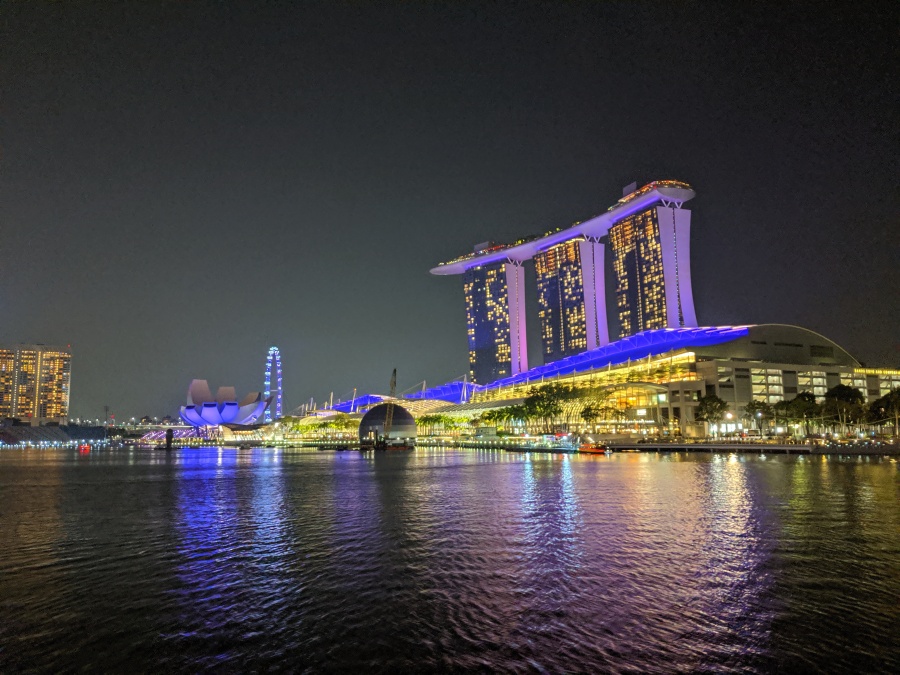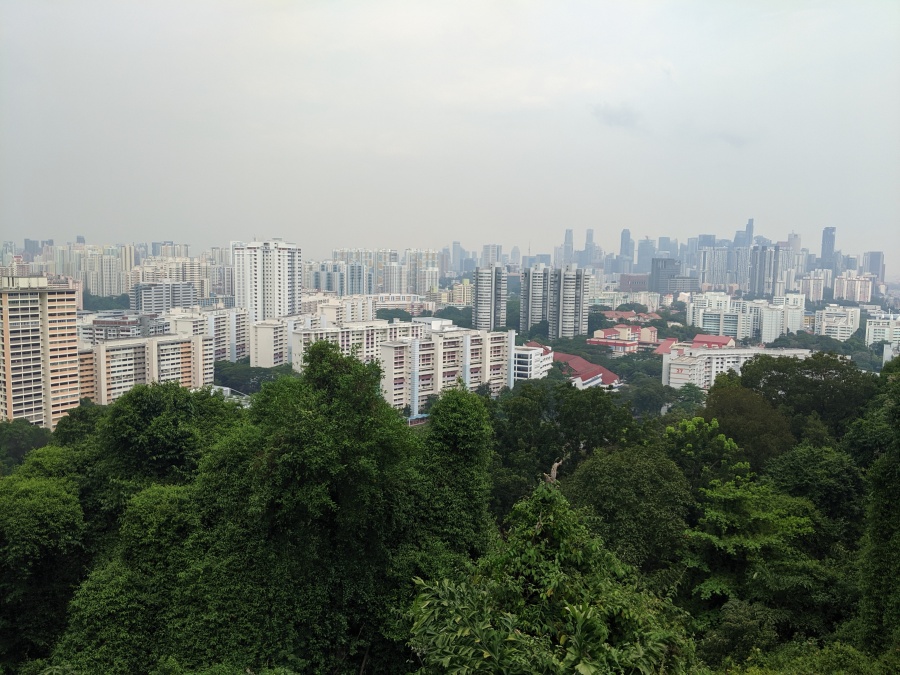30 Hours in Singapore
Singapore airport is a major hub, so I suppose I was bound to end up there sooner or later. It’s also a small country, so when you do end up at the airport, why not take an extra day and see the city?

According to Malay legend, Singapore was founded in the 14th century, though it was apparently mostly destroyed by the Portuguese in the 16th century, sending the island into obscurity for the next two centuries.
That obscurity ended in 1819, when Sir Stamford Raffles decided that Britain should replace the Netherlands as the dominant power in the region, and that Singapore was an ideal place to build a new center of trade and influence.
The British established a new free port in Singapore - meaning any vessel of any nation could come in to trade without tariffs - and the boom began. Singapore attracted immigrants from all over, and grew rapidly. The trade volume went from $400,000 Spanish dollars in 1819 to $22,000,000 by 1824, with the city’s population growing rapidly during this time. The British resolved their dispute with the Dutch in 1824, and cemented Singapore as British territory, with Britain giving up influence in modern-day Indonesia. The city continued to boom and expand on the strength of its trade.
Singapore was occupied by Japan during 1942-1945, and after a brief 2-year union with Malaysia that did not go well became an independent state in 1965.
Since independence, Singapore has rapidly modernized and remains a trade hub, with per capita GDP of some $66,000 (7th in the world - just ahead of the US), with a Gini coefficient of about 46 (indicating medium inequality; about the same as the US) and Human Development Index (HDI) of 0.932 (9th in the world). Population is about 6 million, made up ethnic Chinese, Malays, Indians, and others, who all seem to get along fine.

A lot of this was achieved under Lee Kuan Yew, aka LKY, who was the country’s first Prime Minister, serving from 1959 to 1990. LKY “is recognised as the nation’s founding father, with the country described as transitioning from the “third world country to first world country in a single generation” under his leadership.” wikipedia
The amazing story of Singapore is well-told by the National Museum - go there if you’re in town.
Probably the most recognizable landmark in Singapore now is the Marina Bay Sands Hotel. Doesn’t ring any bells? How about “that hotel with the huge boat on top”?

It looks cool in photos, but it looks absolutely nuts (in the best possible sense) in person. It’s a friggin’ boat perched on three towers!
The view from the top is great, especially of the Singapore Strait:


Another recognizable sight is the Supertree Grove:

The Supertree Grove is also amazing in person.
A more traditional landmark are the Singapore Botanic Gardens - one of three gardens to be honoured as a UNESCO World Heritage Site.
Of particular note are National Orchid Garden. Per wikipedia, it “is at the forefront of orchid studies and a pioneer in the cultivation of hybrids, complementing the nation’s status as a major exporter of cut orchids. Aided by the equatorial climate, it houses the largest orchid collection of 1,200 species and 2,000 hybrids.”

You could easily spend a whole day walking around the gardens - they are beautiful.
Miscellaneous Characters
- Poh, a Grab driver, is happy living in Singapore. In particular, he is grateful that Singapore is safe and stable, something that he has appreciated more recently in light of what’s going on in Hong Kong.
- Chua, another Grab driver, had to go to Indiana for work training some years back, and was really disappointed a) how quiet it was there after dark (and unsafe - something that came as a surprise for him), and b) that he couldn’t find any Chinese restaurants. He likes living in Singapore.
- Ng, yet another Grab driver, who also likes living in Singapore… but complains that it is expensive to live there. He’s in his 50s and was laid off from work, and has no education credentials, and thus turned to driving for Grab. He doesn’t want to go back to school.
- Mormon missionaries
Parting Thoughts

Singapore’s cool. It’s very forward-looking, thinks boldly, and can get big things done. It’s far more lively and fun than I had expected.
There’s 20,000 free public wifi hotspots, developed through a 10-year master plan. Public transit is good and affordable, and there’s ridesharing courtesy of Grab and dockless bike rentals that cost about $0.35 USD per hour.
Really the only complaints I heard from locals is that it’s hard for them to afford to live there. Perhaps that’s not surprising - I’ve heard these stories in basically all the successful cities I’ve been to - New York, LA, London, Prague, Sydney… the list goes on. I suppose that is the price of success.
There’s also of course the fact Singapore os basically a one-party state, though I will say that didn’t come up during my time there. Perhaps that is not surprising…
If you’re out in this part of the world, set aside a few days to visit Singapore!
Comments